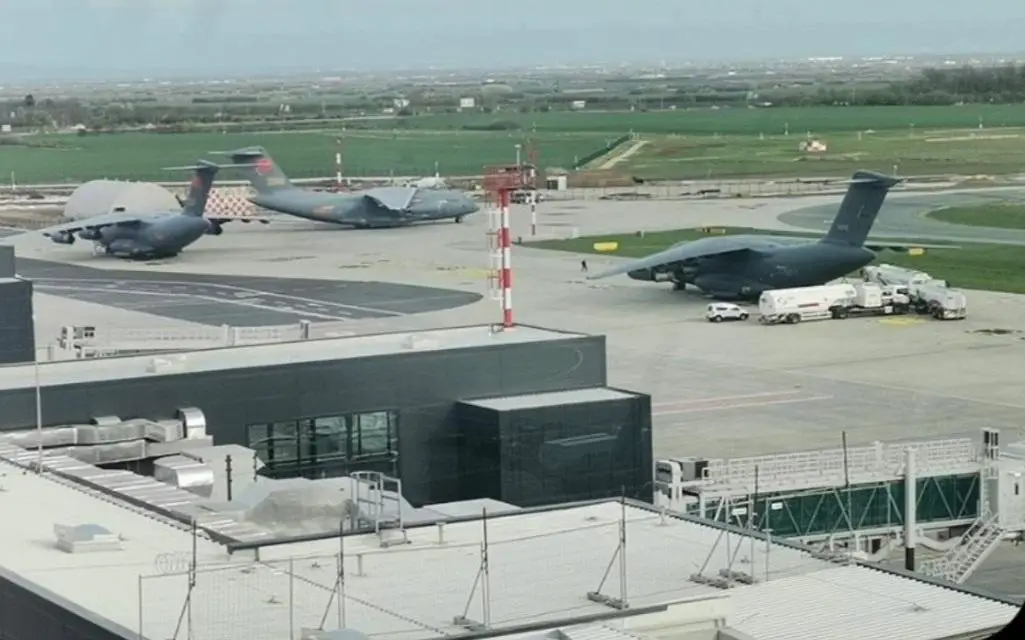A top surface-to-air missile unit of the Chinese People’s Liberation Army (PLA) Air Force recently took part in a systematic confrontational exercise, in which it for the first time tested its quick deployment capability by flying with Y-20 large transport aircraft. Stationed in Southwest China’s border region, a land-based missile battalion affiliated with the air force of the PLA Southern Theater Command participated in the Red Sword exercise. During the exercise, a systematic confrontational one organized by the PLA Air Force with the participation of aviation forces and other land-based missile forces using other types of surface-to-air missiles, this battalion coordinated with friendly forces against hostile ones, simulated more than 50 missile launches, and defended against over 30 systematic targets in mock combat.
The exercise marked the first time this battalion tested its quick deployment capability by flying with Y-20 transport aircraft, as it mobilized across the country to locations including Northwest China’s Ningxia Hui Autonomous Region, North China’s Inner Mongolia Autonomous Region and Northwest China’s Gansu Province. The video footage showing an HQ-22 air defense missile launcher vehicle entering a Y-20 large transport aircraft. Long-range, rapid deployment of heavy surface-to-air missiles has great tactical and even strategic significance, as it enables the PLA to enhance regional air defense in a flexible manner. Since an air defense missile unit usually consists of many elements that require a fleet of strategic cargo planes for transport operations, including launcher vehicles, radar vehicles and other command and support units, the expert said.
The HQ-22 (Hóng Qí-22; Red Banner-22) is a medium- to long-range semi-active radar homing/radio-command guidance air defence system developed and manufactured in China. A typical HQ-22 battery includes one radar vehicle and three transporter erector launchers equipped with four missiles each. Each battery can reportedly engage six aerial targets simultaneously.The missile system has been widely compared to the United States’ Patriot and Russia’s mobile long range S-300 surface-to-air missile system. Although it has a shorter range than S-300 variants such as the S-300PMU-2, it is thought to benefit from superior electronic countermeasures (ECM) and superior capabilities against stealth targets at shorter ranges. The HQ-22 will be one of the mainstays of China’s air defense network, replacing the HQ-2 missiles of the Cold War era.
The Xi’an Y-20 Kunpeng (Yùn-20 K?npéng; Transport-20 Kunpeng) is a large military transport aircraft developed by the Xi’an Aircraft Industrial Corporation for the People’s Republic of China (PRC). The aircraft is nicknamed “Chubby Girl” in the Chinese aviation industry because its fuselage is much wider than aircraft previously developed in China. The Y-20’s four-meter tall hold can lift up to 66 tons, and transport up to 2 Type 15 tanks or 1 Type 99A tank over a distance of 7800 km. The Y-20 uses components made of composite materials. The composites are now produced in China, whereas in the past they had to be imported. The Y-20’s cabin incorporates flame-retardant composites developed by the 703 Institute of the China Aerospace Science and Technology Corporation (CASC). The Y-20 incorporates a shoulder wing, T-tail, rear cargo-loading assembly and heavy-duty retractable landing gear, consists of three rows, with a pair of wheels for each row, totaling six wheels for each side.












